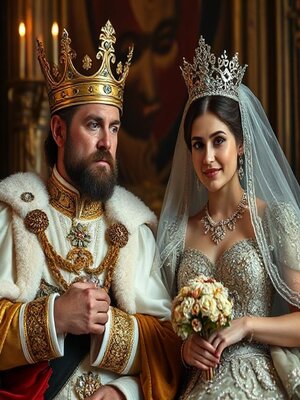
Sign up to save your library
With an OverDrive account, you can save your favorite libraries for at-a-glance information about availability. Find out more about OverDrive accounts.
Find this title in Libby, the library reading app by OverDrive.



Search for a digital library with this title
Title found at these libraries:
| Library Name | Distance |
|---|---|
| Loading... |
The monarchy of England, one of the oldest in the world, has seen a long and complex line of kings and queens since the early medieval period. Beginning with the Anglo-Saxon era, through the Norman Conquest, the Plantagenets, Tudors, Stuarts, and beyond, the English throne has passed through dynasties shaped by war, politics, and religion.
The early English monarchs, such as Alfred the Great (871–899), were Saxon kings who defended their kingdoms against Viking invasions. Alfred, in particular, is remembered for his military acumen and promotion of learning and law. The unification of England occurred under Æthelstan in 927, generally considered the first King of all England.
In 1066, the Norman Conquest under William the Conqueror marked a pivotal shift. William I (1066–1087) claimed the throne after defeating Harold II at the Battle of Hastings. His reign began the Norman dynasty, which brought feudalism and significant administrative changes.
The Plantagenet dynasty followed, starting with Henry II (1154–1189), whose reign was marked by legal reforms and conflict with Thomas Becket. His son, Richard the Lionheart (1189–1199), gained fame in the Crusades, while his brother, King John (1199–1216), was forced to sign the Magna Carta in 1215. The Plantagenet line saw the Hundred Years' War and the Wars of the Roses, culminating in the rise of the Tudors.
The Tudor dynasty began with Henry VII in 1485 after his victory at Bosworth Field. His son, Henry VIII (1509–1547), is famous for his six marriages and the English Reformation, which separated the Church of England from the Catholic Church. His children, Edward VI, Mary I, and Elizabeth I, each had dramatic reigns. Elizabeth I (1558–1603) led England into a golden age of exploration, culture, and relative stability.
After Elizabeth's death without an heir, the throne passed to the Stuarts, beginning with James I of England (also James VI of Scotland), uniting the crowns of England and Scotland. His son, Charles I, was executed after the English Civil War, briefly abolishing the monarchy under Oliver Cromwell's Commonwealth. The monarchy was restored in 1660 under Charles II.
The Glorious Revolution of 1688 brought William III and Mary II to the throne, establishing parliamentary supremacy over the crown. Queen Anne, the last Stuart monarch, died in 1714, leading to the Hanoverian succession with George I.
The Georgian era saw the expansion of the British Empire. Queen Victoria (1837–1901) presided over the Victorian age, characterized by industrial growth and imperial expansion. Her death led to the modern House of Windsor.
In the 20th century, monarchs such as George V, George VI, and Elizabeth II saw the decline of empire, two world wars, and dramatic social change. Elizabeth II (1952–2022) became the longest-reigning monarch in British history.
Her son, Charles III, ascended in 2022, marking a new era for the British monarchy in a rapidly changing world. Throughout centuries, the English monarchy has been a symbol of continuity amid change, adapting to survive shifting political, social, and religious landscapes.







